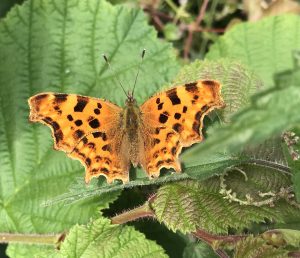How Architecture Can Support Local Biodiversity?
In a world that’s constantly evolving, preserving and nurturing local biodiversity has become more important than ever. Biodiversity, the variety of life forms within an ecosystem, is not just a source of beauty, but also a key pillar for the health and sustainability of our planet. Every species, from the tiniest microbe to the grandest tree, plays a role in maintaining the delicate balance of our ecosystem
In the realm of sustainability and environmental conservation, architecture plays a pivotal role that must goes beyond aesthetics and functionality. Modern architecture has the potential to integrate seamlessly with the natural world, contributing to the preservation and enhancement of local biodiversity.

Choose Native Plants – Create Wildlife-Friendly Spaces – Restrict Chemical Usage – Conserve Water – Support Local Conservation Efforts – Reduce your Carbon Footprint – Respect Wildlife – Shop Sustainable Agriculture
We hear these phrases all the time, but what do they actually mean and how can you help?
Start by learning about the local flora and fauna in your area. Understanding the web of life that surrounds you is the first step towards appreciating and preserving it.
When gardening, opt for native plants and avoid invasive species. These plants have evolved to thrive in your local climate and soil conditions, providing a natural habitat and food source for local wildlife. Design your garden to be wildlife-friendly, adding features like bird baths/feeders, butterfly gardens, and insect hotels to attract a diverse range of creatures. Don’t forget the unsung and unseen heroes of the animal kingdom, they lay the foundation for these larger animals to thrive.
Minimise the use of pesticides and herbicides in your garden. These chemicals can harm not only the targeted pests but also insects, birds, and other animals – use natural and/or organic solutions. Use water- efficient irrigation systems, collect rainwater, and only water your plants when needed.
Get involved with volunteer groups and community incentives that are local to you, it is easier than you might think! Car sharing, cycling, public transport and conserving energy at home mitigates the negative effect of climate change on local ecosystems, whilst reducing those hefty energy bills.
Practice responsible ecotourism, avoid distributing wildlife and their habitats, keep a safe distance, avoid feeding wild animals and follow guidelines to avoid to doing more harm than good. Choose local every time!
Supporting sustainable agriculture, encourages preservation and good organic farming reducing the negative impact of conventional/mass farming on local ecosystems.
Green Roofs and Living Walls – Native Landscaping – Water Management – Wildlife Passages – Sustainable Materials – Reuse & Retrofit – Habitat-Centric Design – Collaborative Planning – Green Certification
One of the most visible ways architecture can support local biodiversity is through the incorporation of green roofs and living walls. These installations introduce native vegetation to buildings, providing habitats for insects, birds, and even small mammals. Designing buildings/ landscapes with natural water management systems like rain gardens and rainwater harvesting can help manage surface water and provide critical habitats for wildlife. Working in collaboration with planners, contractors and clients to create wildfire passages over/under roads or even through fencing reduces the risk of accidents allowing for diversity to be maintained.
Sustainable, locally sourced materials have a lower carbon footprint and reduce the negative impact on ecosystems caused by resource extraction and transportation. Promoting adaptive reuse, retrofitting and repurposing existing buildings reduces the need for new construction, minimising habitat disruption and conserving resources. Bird/bat roots, insect homes native flower meadows, deadwood piles and untouched areas of your garden create a space for various species to utilise. Technologists, ecologists, planners, architects and local communicates can collaborate to create holistic design taking into account both humans and wildlife. Incorporating green certifications such as LEED, BREEAM and improving EPC’s elevate sustainable practices within both domestic and commercial architecture.
Moving forward in addressing environmental challenges, architectural professionals have a
opportunity to be at the forefront of creating spaces that are not just visually appealing and functional but also beneficial for the local ecosystem. By embracing sustainable practices and integrating nature into designs, we can help pave the way toward a harmony of human development and the natural world.
Jack Crathern, Swell Architecture
This article was featured in the Sidmouth Herald, as part of our support for Sid Valley Biodiversity Group.




